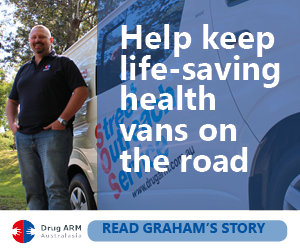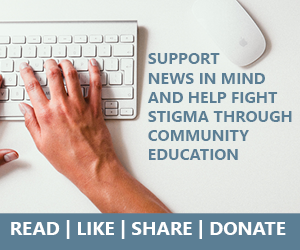 A “headclutcher” is a type of stock picture often – too often, according to campaigning charities – used to illustrate stories about mental ill health. An example in the Guardian accompanied an article on 7 April with the headline “How not to talk to somebody with depression”. The picture, of a young man sitting with his head in his hands, was changed – following complaints below the line – to one of a young woman looking out of a window, which also drew criticism.
A “headclutcher” is a type of stock picture often – too often, according to campaigning charities – used to illustrate stories about mental ill health. An example in the Guardian accompanied an article on 7 April with the headline “How not to talk to somebody with depression”. The picture, of a young man sitting with his head in his hands, was changed – following complaints below the line – to one of a young woman looking out of a window, which also drew criticism.
NYBrit commented: “It’s a stereotypically sad image. The point being made was that people who are depressed appear as happy as everybody else. It’s a mask we wear. Given that a large part of the problem is that people who don’t have depression often don’t understand it, a happy image would perhaps have been more appropriate.”
These kinds of criticisms have prompted calls for a change in the way mental ill health is portrayed. Time to Change, an anti-stigma campaign run by the mental health charities Mind and Rethink Mental Illness, wants to see an end to the use of the “headclutcher” style of picture. The Time to Change website says: “All manner of mental health stories – about anything from talking treatments to scientific research – are illustrated by a ‘headclutcher’ photo.” The campaign asked supporters of the charities what they thought about such images currently used in the media. According to the campaign, nearly 2,000 responded.
Eight in 10 people said “headclutchers” don’t show how it feels to have a mental health problem. One in three reported that images of suicide had triggered suicidal feelings. And many said that people with mental health problems don’t look depressed all the time.
The campaign has created a library of alternative pictures for mainstream media and others to use. In addition, one of our newsroom journalists, Elena Cresci, has issued a request via GuardianWitness, our platform for content submitted by readers, for people to contribute their own alternative images and illustrations that they think would be better suited to run alongside articles about mental health. Cresci believes that illustrations rather than photographs may be the answer: “I genuinely feel we should invest more in illustrators precisely for this reason [the difficulty of finding suitable photographs]. We’ve got a mental health Tumblr blog and what I’ve noticed is more and more creative accounts dedicated to illustrating mental health.”
If the Guardian is behind the campaign for change, how did it come to use a “headclutcher” photograph?
First, a statement of the obvious: the nature of news photography and the way images are used have changed enormously in a digital age. Less than 20 years ago, when the Guardian was simply a newspaper, it published around 60 to 70 images a day. Such an article on depression may not have been illustrated at all – the page on which it appeared may have had a stand-alone picture that had nothing to do with depression. Now each piece of content – the Guardian publishes on average 600 a day – is accompanied by an image because this encourages a higher level of engagement from the reader. This means that, in print and online, the Guardian publishes around 1,200 images a day, 70% of which are supplied by agencies.
At the time of 9/11 in 2001, the Guardian’s picture database handled 2,000 images a day; now it handles 22,000 – and on days when there is a big event, such as the Oscars, there have been as many as 41,000 images coming into the system from picture agencies and individual photographers.
So while it’s possible for editors to take a step back and spend time considering the choices for the award-winning Eyewitness middle-page spread in the newspaper, there are an awful lot of choices that have to be made in a very short time frame for the other 599 pieces of content.
In this case, it appears that the subeditor or picture editor went for an uncomplicated image that would instantly register despair with the reader. There is nothing inherently wrong with looking for a swift, simple way to get the attention of the reader. But we should strive to avoid clichés.
This article first appeared in The Guardian News, 13 April 2015























